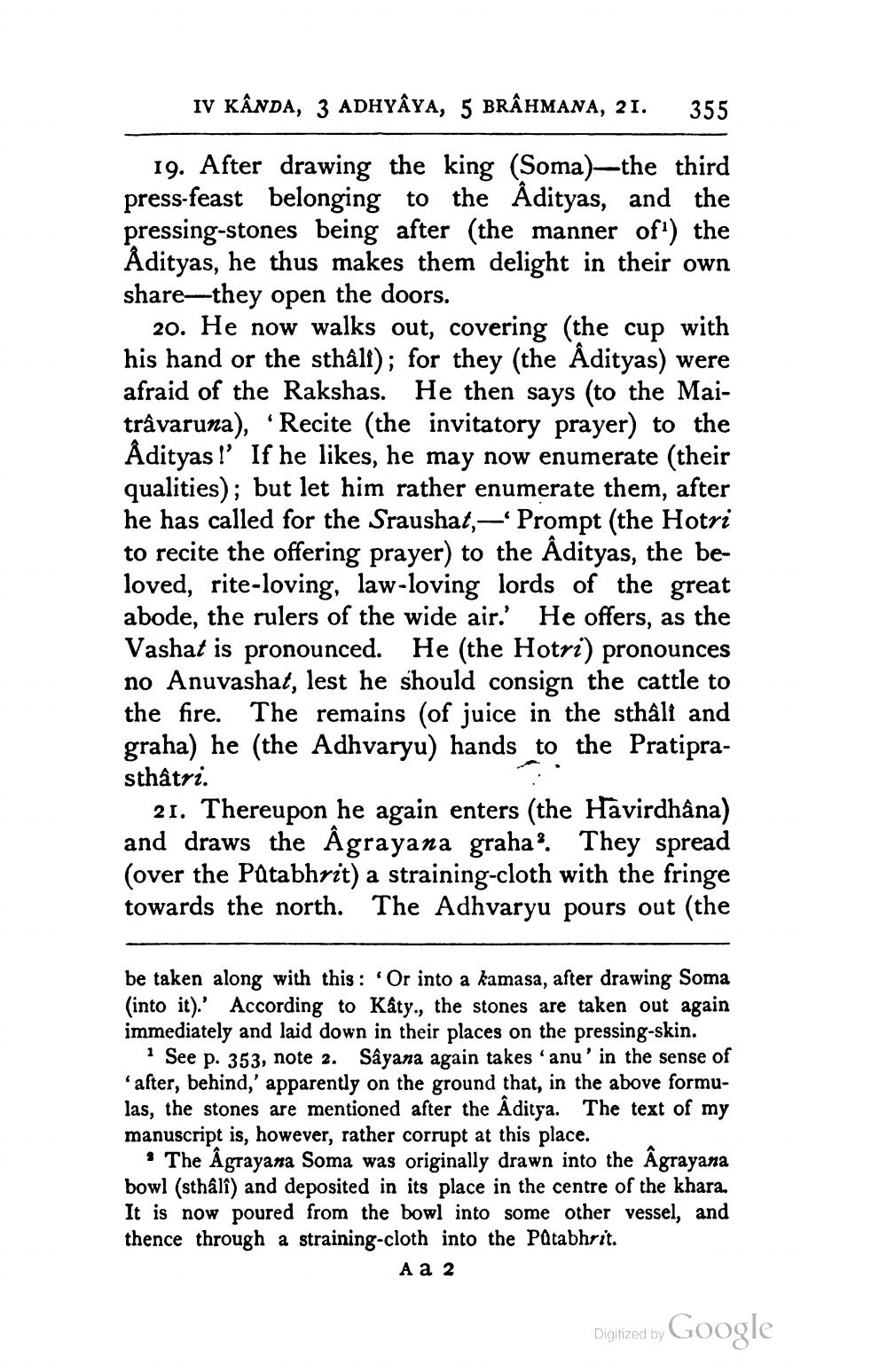________________
IV KÂNDA, 3 ADHYAYA, 5 BRÂHMANA, 21.
355
19. After drawing the king (Soma)—the third press-feast belonging to the Adityas, and the pressing-stones being after (the manner oft) the Adityas, he thus makes them delight in their own share-they open the doors.
20. He now walks out, covering (the cup with his hand or the sthâli); for they (the Adityas) were afraid of the Rakshas. He then says (to the Maitrâvaruna), "Recite (the invitatory prayer) to the Ådityas !' If he likes, he may now enumerate (their qualities); but let him rather enumerate them, after he has called for the Sraushat,— Prompt (the Hotri to recite the offering prayer) to the Adityas, the beloved, rite-loving, law-loving lords of the great abode, the rulers of the wide air. He offers, as the Vashat is pronounced. He (the Hotri) pronounces no Anuvashat, lest he should consign the cattle to the fire. The remains (of juice in the sthalt and graha) he (the Adhvaryu) hands to the Pratiprasthâtri.
21. Thereupon he again enters (the Havirdhana) and draws the Âgrayana graha:. They spread (over the Patabhrit) a straining-cloth with the fringe towards the north. The Adhvaryu pours out (the
be taken along with this : 'Or into a kamasa, after drawing Soma (into it).' According to Katy., the stones are taken out again immediately and laid down in their places on the pressing-skin.
See p. 353, note 2. Sayana again takes 'anu' in the sense of after, behind,' apparently on the ground that, in the above formulas, the stones are mentioned after the Aditya. The text of my manuscript is, however, rather corrupt at this place.
• The Âgrayana Soma was originally drawn into the Âgrayana bowl (sthâlî) and deposited in its place in the centre of the khara. It is now poured from the bowl into some other vessel, and thence through a straining-cloth into the PQtabhrit.
Аа 2
Digitized by Google




